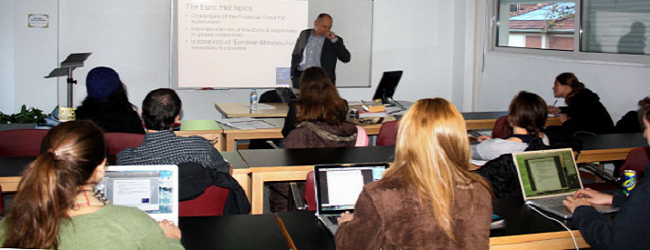To mark London EdTech Week, the British Educational Suppliers Association (BESA) has published a report on how the impact of edtech is currently measured in the classroom. The report features survey work undertaken by the National Education Research Panel (NERP) on ICT leaders and decision-makers from 454 Primary schools and 252 Secondary schools in England.
Recent research from the Future Leaders Trust, Teach First and Teaching Leaders warns of a serious shortfall in the number of heads and senior leaders required over the next decade, as pupil numbers rise and the present incumbents retire or move on. Many of those currently in headship attest to the rewards and satisfactions of the role, despite its accepted demands and pressures. But how can we encourage those not currently in whole-school leadership roles to take the plunge – to embrace risk and uncertainty and step up to the challenge? How can we encourage, motivate and inspire them to ask: ‘If not me, then who?’, and how can prepare them and then support them throughout their time in the role?
It’s with a tremendous honour that we bring you the Innovate My School Guide 2015/16. Bringing together 21 none-more-enthusiastic teachers, this publication examines 10 key areas of education to inform the year ahead. It discusses the benefits, pitfalls, learning outcomes and future trends of various pedagogic areas, allowing our experienced contributors to share methods and resource beneficial to schools worldwide.
Following on from Jane Basnett’s recent article on NQTs, a pastoral professional-turned newly-qualified teacher (and former colleague of Basnett’s) gives her advice to veteran teachers dealing with newcomers.

I'm about to embark on my NQT year teaching English in an 11-18 academy in the South West. Before doing the PGCE, I worked in other areas of education for four years, first in university outreach, then in a pastoral and academic role in an independent school, where I was a colleague of Jane Basnett. Following on from Jane's very welcome and gratefully received ideas in an earlier post - 'Be prepared: A veteran's advice for NQTs' - here's a view from The Other Side: an NQT's guide to handling NQTs...
Recently, I was reminded of Baz Luhrmann's chart-topping single from 1998 called ‘Wear Sunscreen’. The song itself was based on an article written by Chicago Tribune Pulitzer Prize winning journalist Mary Schmich. Schmich wrote that "inside every adult lurks a graduation speaker". It got me thinking about what advice I would give to NQTs and others about to embark on a career in teaching... So, here goes.
It’s been a while since Nicole Ponsford switched sides and handed in her teaching badge. Since then, she’s become acutely aware of the challenges presented by working with her former peers, and finds that not enough non-educators know enough about presenting to teachers. Here, she gives her top 10 pieces of advice on teaching the teachers.

My role has changed. From being a non-descript member amongst the staff audience, it is now me who is at the front of the hall when it comes to teacher training sessions. I always try to remember my place as a guest and consider what I look like from the back of the room (who said back of a bus?!) and sound like to Mr Cynical Teacher with his arms folded and his lips pursed (and that’s before I have turned the computer on or given out leaflets). Sigh. It is hard work, but when the light-bulbs start twinkling, you really feel that you can give yourself a “self-5”. One of my favourite things is to help teachers find their passion for learning again, but they do make you work for it.
On 30th January, we featured an article by Adam Lewis on how he aims to teach like a champion. In this follow up piece, he discusses how he has altered his teaching methods further in order to fit in with this ideal.

I have continued to employ the methods put forward in my last blog post. These adjustments are now starting to become embedded into my practice, so that I am actively aware that I am using them consistently and this seems to be having a positive effect on my students. I will now not continue until every hand is straight up and, as a result, all my classes are quicker to be ready to listen with their hands straight up in the air a lot quicker than previously in the year.
Similarly, if one student is not following the procedure, I use positive group correction ("thank you to the whole of the left side of their room with their hands straight up") and, if not successful, move on to anonymous individual correction ("I'm just waiting on one student on the right side to put their pen down and put their hand straight up"). This has resulted in some students admonishing the student who the class is waiting on, which is negating the positive effect of the anonymous individual correction, but on the other hand, it does seem to be creating a strong team within the class.
I have adjusted my technique to include tracking the speaker. These are clear instructions to turn and watch the person who is speaking at the time. Although this is not completely embedded, I am reminding the students who are often the ones not seen tracking to try and do this consistently. When I introduce SLANT into my practice, I hope that this will be even more consistent.

A community-driven platform for showcasing the latest innovations and voices in schools
Pioneer House
North Road
Ellesmere Port
CH65 1AD
United Kingdom